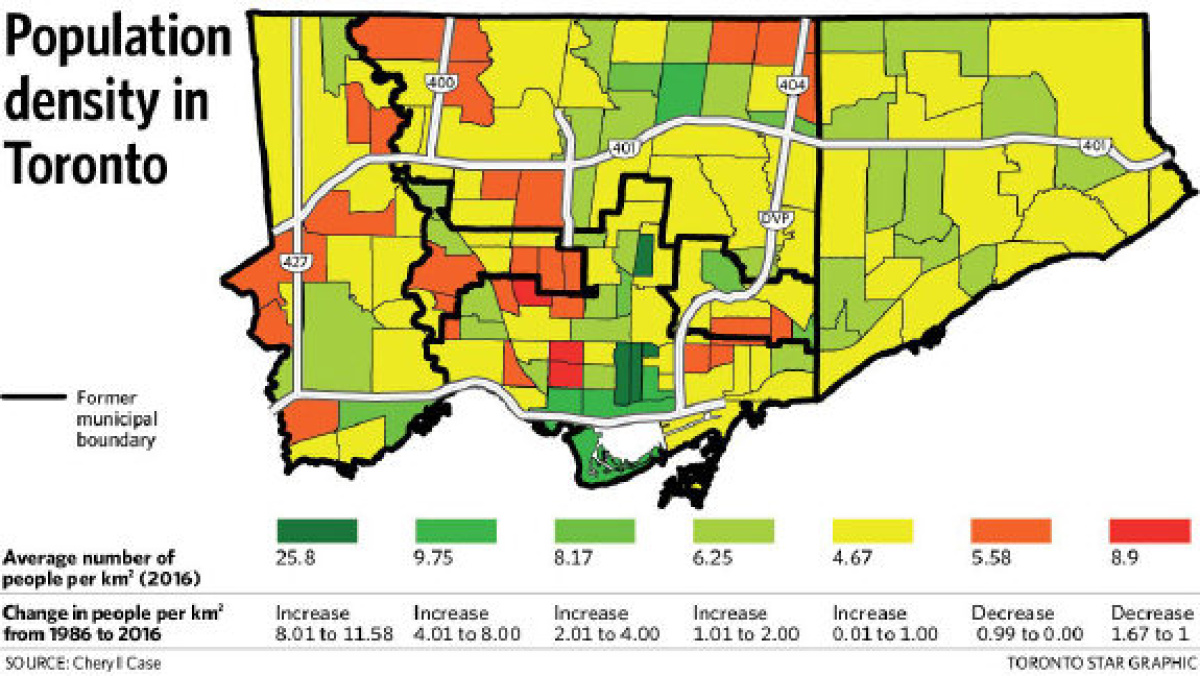Don’t plunder that protected green space to squeeze in more housing just yet! A new report out of Ryerson’s Urban Planning department concludes that Toronto is over-housed, with a majority of 140 city neighbourhoods suffering from a stagnant or declining population over the last 30 years. See: Toronto has too much housing despite overall population growth. This map shows the change in population density for each neighbourhood between 1986 and 2016.
What we have here is the product of 15 years of the largest debt-driven housing bubble in human history coupled with an increasingly aged population.
“We’re surrounded by seniors. They’re either widowed or the kids have moved out. These are detached bungalows . . . Two families could live in these houses essentially.”
Like most developed economies, Toronto has been misallocating finite resources to inflate asset prices (and property taxes!) to create an oversupply in the wrong kind of shelter: oversized, single-dwelling, energy inefficient, old tech, outrageously priced and a fortune to maintain. As shown below, the majority–nearly 54%–of Canada’s housing supply is single-detached and virtually all dwellings having antiquated, inefficient energy systems.
 Meanwhile the pool of able buyers continues to shrink under the weight of stagnant wages and already toxic consumer and government debt levels. Something has to give, and that something is impossible living costs.
Meanwhile the pool of able buyers continues to shrink under the weight of stagnant wages and already toxic consumer and government debt levels. Something has to give, and that something is impossible living costs.
The opportunity here is to stop implementing policies that continue to increase debt and magnify waste and imbalances, while incenting smart shelters that will help families live more efficiently. After the debt rush, solutions lie in re-purposing old tech spaces into net zero multi-dwelling housing, where people can live comfortably with a fraction of the cost and environmental footprint. To get there, we have to give back inflated asset bubbles, but we gain a sustainable economy and society–where workers can afford to minimize debt, live, save, and pay taxes to support both the old and the young.


